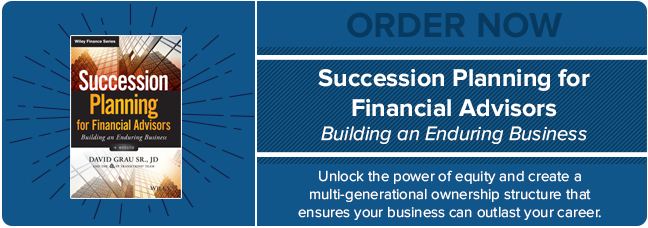Blog
My Second Book - Nailing it From Word One
The publishable manuscript for , was submitted to Wiley & Sons on March 17th, 2014 – all 78,118 words of it – 76 days past due. It was released in June 2014, and I couldn’t have been happier or prouder. It is, in my humble opinion, a very good book, one that I and the entire FP Transitions Team can be proud of, and one this industry will benefit from.
After the honest critique from my partner, Brad, regarding the first manuscript, and all I learned writing it. The second book came a lot easier, and faster. It was written in just over 60 days once Brad and I tended to the all-important task of proper organization. We had a good plan the second time around, and it was well executed. It wasn’t so much that I knew what to say, it was more that I had learned what wasn’t all that interesting and what wasn’t really necessary in the telling of an interesting and informative story. I still shake my head at all the good material left on the cutting room floor. It was hard to let that all go, but sharp and decisive editors helped a lot.
As an English major in college, I’d always wanted to write a book. Like many aspiring authors, I suspect, I attacked my writing fears by instead reading the classics and the various bestsellers that found their way onto my desk over the years, and by convincing myself that I couldn’t do what these great writers had done. The bar was simply too high, and I kept looking up to impossible heights. Until one day, I decided otherwise. It was time to write and publish a book that could make a difference, and I would do the best I could.
I knew that when I finally did sit down to write and publish my first book, the one part that would matter most to me was the first sentence. That was the one sentence in the entire book that I had to get just right; the one sentence upon which the rest of the book, my mindset, and my strength of purpose depended – maybe this was real or imagined, but it was important to me. Think back to the classics:
“Call me Ishmael,” from Herman Melville’s Moby Dick.
“It was the best of times, It was the worst of times,” opening Charles Dickens’ A Tale of Two Cities.
“He was an old man who fished alone in a skiff in the Gulf Stream and he had gone eighty-four days now without taking a fish,” of Ernest Hemingway’s The Old Man and the Sea.
“Captain First Rank Marko Ramius of the Soviet Navy was dressed for the Arctic conditions normal to the Northern Fleet Submarine base in Polyarny,” to start Tom Clancy’s Hunt for Red October.
Yes, these were the standards I sought to match and no sentence was harder, or more important to me than that first one.
But starting with a crescendo? Well, that’s hard to do in a book that is part of a financial series and about succession planning. Still, I think that the first sentence in Succession Planning for Financial Advisors: Building an Enduring Business is powerful. It captures the essence of an industry of entrepreneurs, and targets its Achilles heel: “As an industry, we have a problem to solve: 99 percent of today’s independent financial services and advisory practices will not survive their founder’s retirement or the end of the founder’s individual career.”
And from that starting point, we set about together in the following 200+ pages to solve problems and to build something better for the future. It is a book that I am very proud of. I hope you’ll read it and enjoy it.
